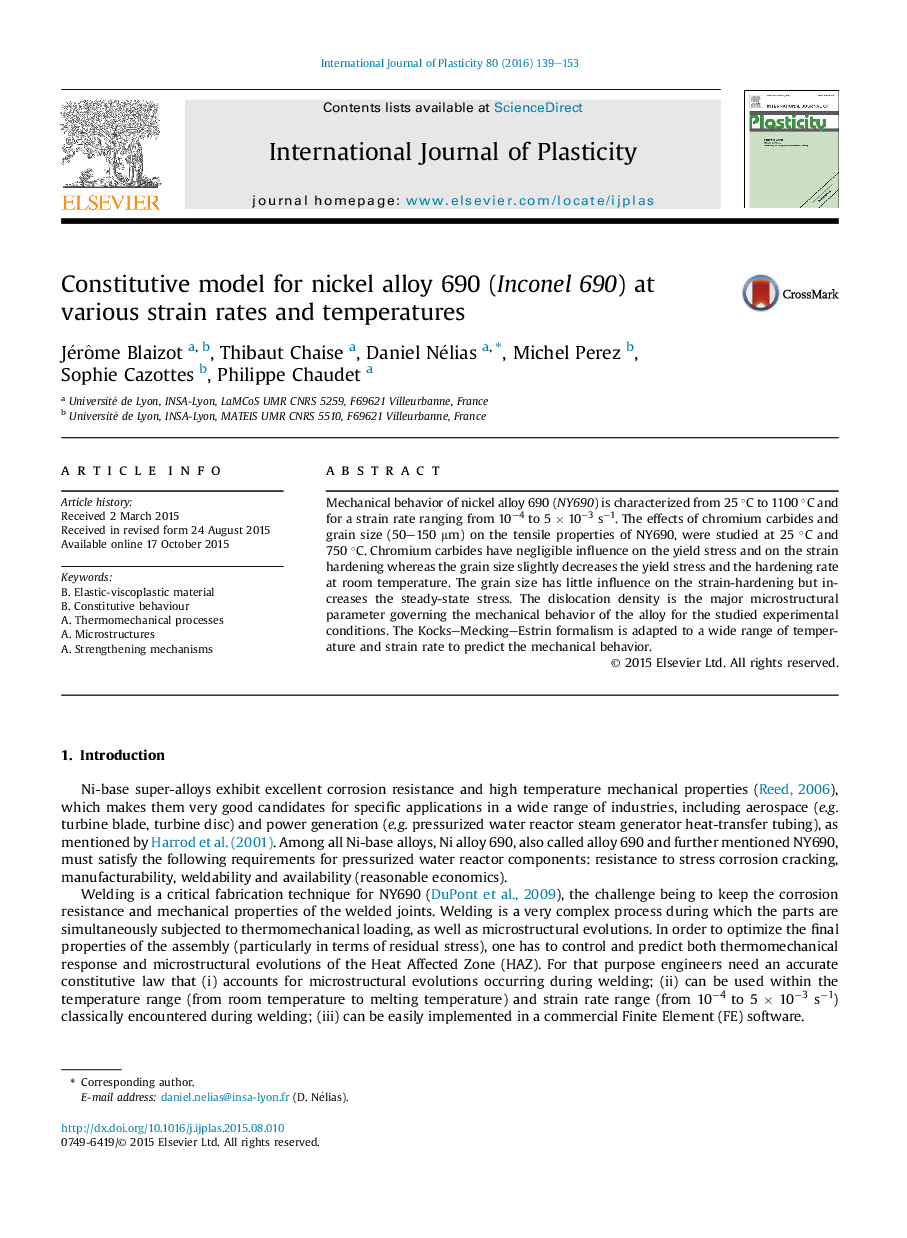| Article ID | Journal | Published Year | Pages | File Type |
|---|---|---|---|---|
| 788986 | International Journal of Plasticity | 2016 | 15 Pages |
•We believe that we developed an original experimental and modelling strategy.•Three conditions are studied: as-received, solution annealed and fully precipitated.•Modeling of mechanical behavior in a large range of temperature and strain rate.•The model and data presented can be used for fast thermo mechanical treatments.
Mechanical behavior of nickel alloy 690 (NY690) is characterized from 25 °C to 1100 °C and for a strain rate ranging from 10−4 to 5 × 10−3 s−1. The effects of chromium carbides and grain size (50–150 μm) on the tensile properties of NY690, were studied at 25 °C and 750 °C. Chromium carbides have negligible influence on the yield stress and on the strain hardening whereas the grain size slightly decreases the yield stress and the hardening rate at room temperature. The grain size has little influence on the strain-hardening but increases the steady-state stress. The dislocation density is the major microstructural parameter governing the mechanical behavior of the alloy for the studied experimental conditions. The Kocks–Mecking–Estrin formalism is adapted to a wide range of temperature and strain rate to predict the mechanical behavior.
